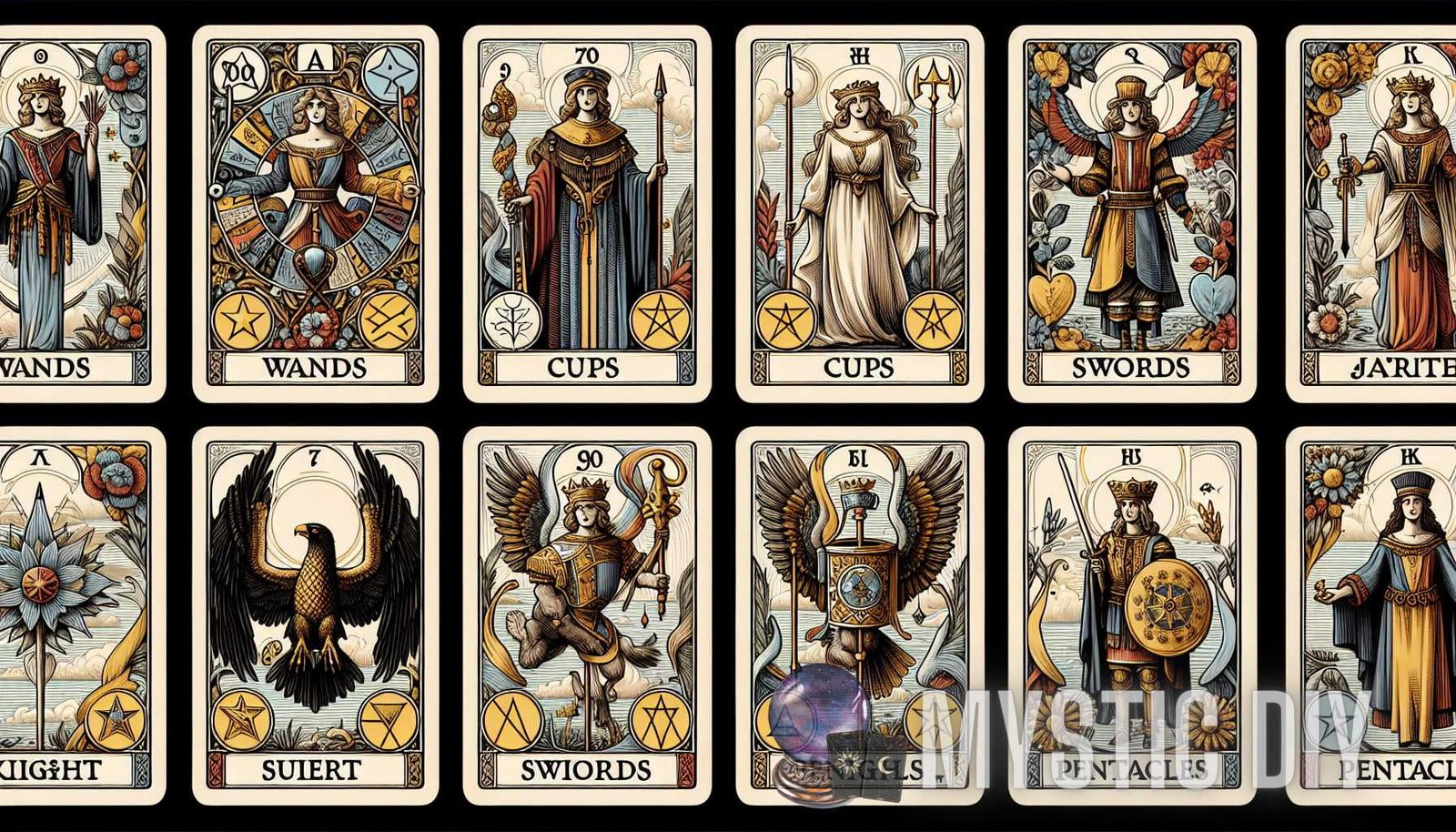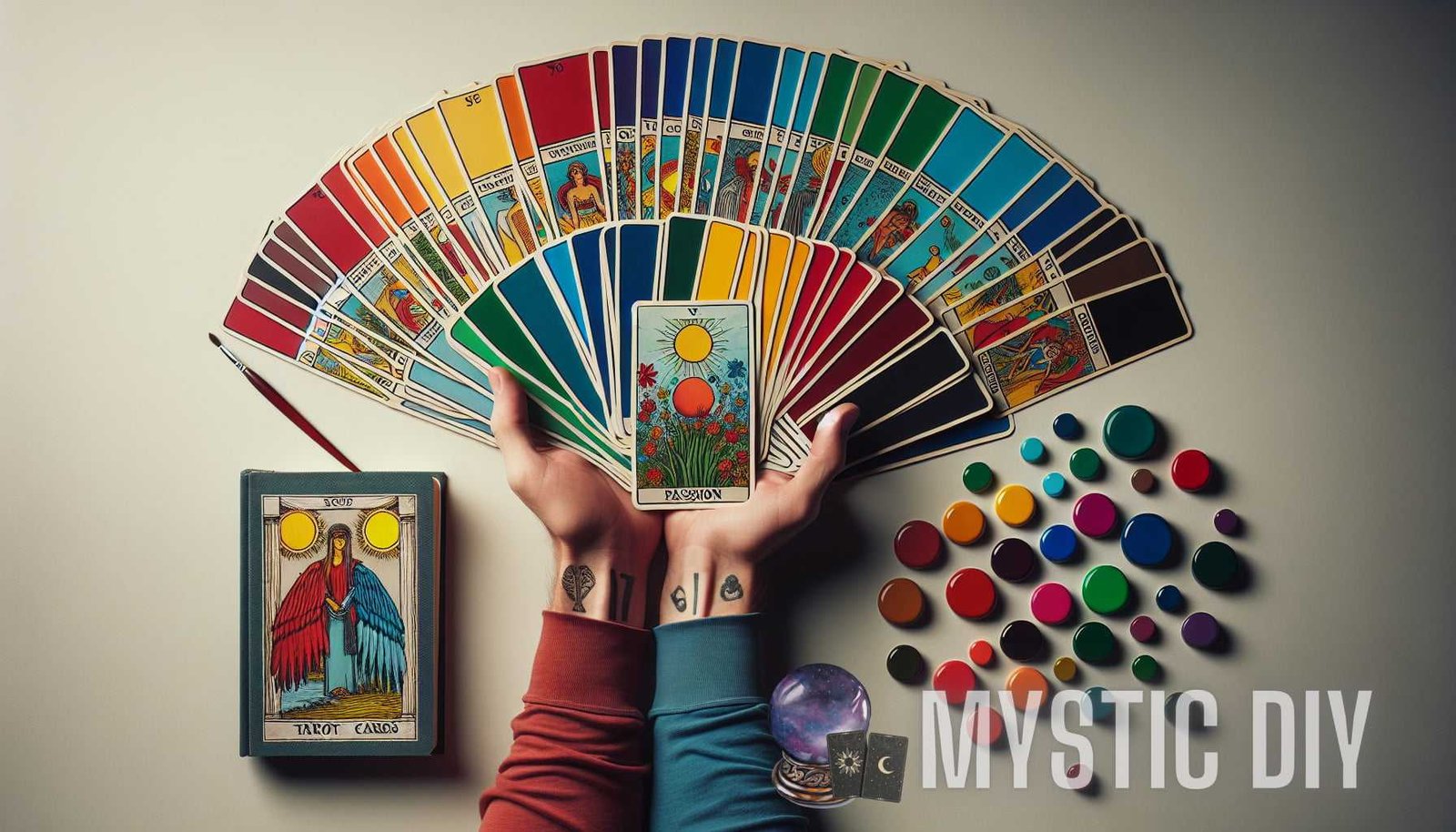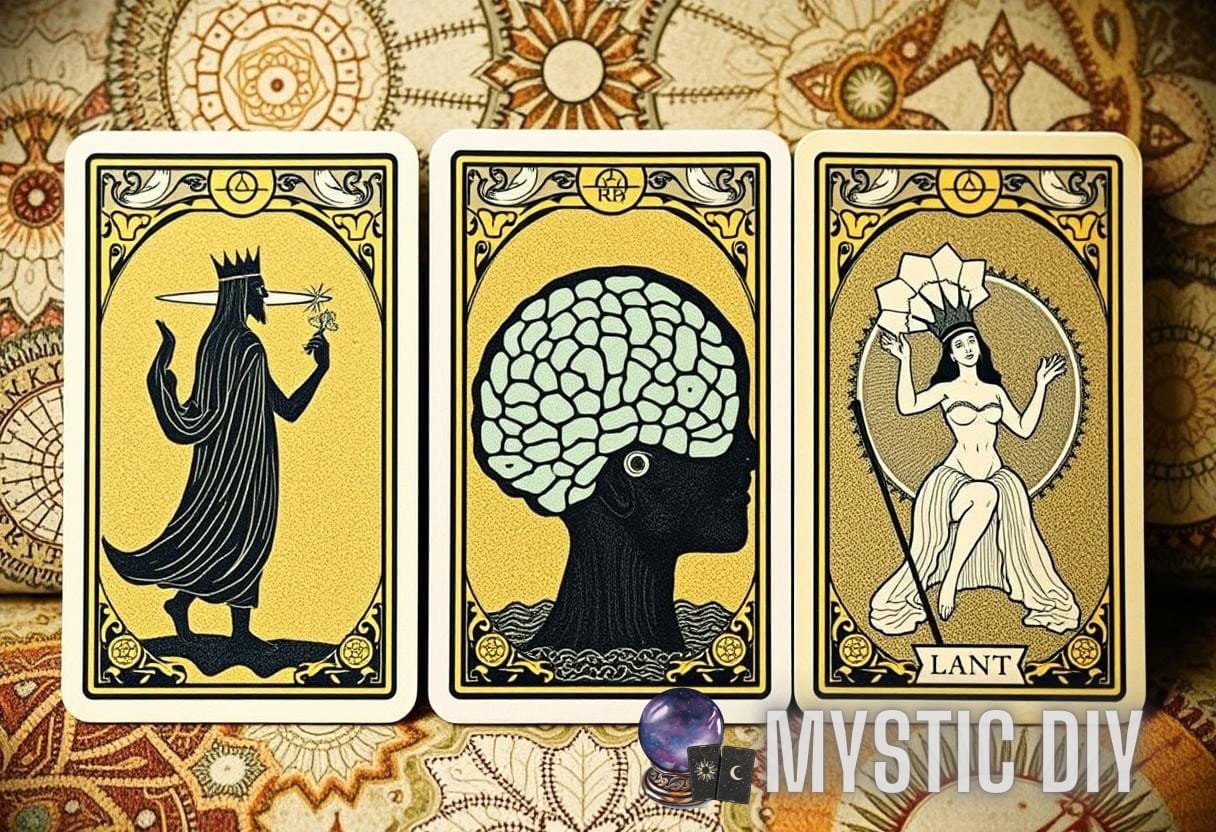Introduction
Tarot cards have fascinated people for centuries, captivating both seekers of spiritual guidance and those interested in the art of divination. The intricate symbolism found in tarot decks has been the subject of much speculation and interpretation, and many believe that these cards hold hidden meanings and insights into our lives. In this comprehensive guide, we will dive into the world of tarot and explore the scientific exploration of the hidden meanings behind the symbolism of tarot cards.
Understanding the History of Tarot Cards
To truly appreciate the intricate symbolism of tarot cards, it is important to understand their rich history. Tarot cards have a complex lineage, with origins that date back to the 14th century. Originally used as playing cards in Europe, it wasn’t until the late 18th century that tarot cards began to be used for divination purposes. Since then, tarot has evolved into a widely recognized tool for spiritual guidance and self-discovery.
The earliest known tarot decks, such as the Visconti-Sforza tarot deck, were hand-painted and highly ornate. These early decks featured symbolic imagery that reflected the cultural and social themes of the time. Over the years, various artists and occultists have created their own tarot decks, each with their own interpretation of the symbolism within the cards. Today, there are hundreds of different tarot decks available, each with its own unique symbolism and artistry.
For a more detailed exploration of the history of tarot cards, check out this Wikipedia page.
The Structure of Tarot Decks
Before we delve into the symbolism of tarot cards, it is important to understand the structure of a typical tarot deck. A traditional tarot deck consists of 78 cards, divided into two main categories: the Major Arcana and the Minor Arcana.
The Major Arcana
The Major Arcana is a series of 22 cards that represent significant life events and archetypal experiences. Each card in the Major Arcana holds its own unique symbolism and story, allowing the seeker to explore different aspects of their life’s journey. Some of the most well-known cards in the Major Arcana include The Fool, The Magician, The Empress, and The Tower. Each card in the Major Arcana has its own individual meaning, offering insights into the deeper aspects of the human experience.

The Minor Arcana
The Minor Arcana is divided into four suits: Wands, Cups, Swords, and Pentacles. Each suit contains 14 cards, consisting of ten numbered cards (Ace through Ten) and four court cards (Page, Knight, Queen, and King). The Minor Arcana represents the day-to-day experiences and challenges of life, providing guidance and insight into specific areas such as emotions (Cups), thoughts (Swords), actions (Wands), and material aspects (Pentacles).
The structure of tarot decks may vary slightly depending on the specific deck, but the general framework of Major Arcana and Minor Arcana remains consistent across most decks. Understanding the structure of tarot decks is essential when interpreting the symbolism within the cards.
Interpreting the Symbolism of Tarot Cards
Tarot cards are filled with rich, symbolic imagery that can be interpreted in a variety of ways. While some may view tarot as purely esoteric or mystical, others approach it with a more scientific mindset. By examining the symbolism within tarot cards from a scientific perspective, we can gain valuable insights into the hidden meanings and messages they hold.
The Archetypes Within Tarot
One of the key aspects of tarot symbolism is the presence of archetypes. Archetypes are universal symbols that represent fundamental human experiences and patterns of behavior. Carl Jung, a renowned Swiss psychologist, recognized the presence of archetypes in various cultural and religious symbols, including tarot cards. By understanding the archetypes present within the tarot, we can gain a deeper understanding of ourselves and the world around us.
The Fool, for example, represents the archetype of the innocent seeker, someone on the cusp of a new journey. The High Priestess embodies the archetype of the mysterious and intuitive feminine energy, while The Emperor represents the authoritative and structured masculine energy. By exploring the archetypal themes present in tarot cards, we can unlock a wealth of knowledge and self-discovery.
The Numerology of Tarot
Another important aspect of tarot symbolism is numerology. Each card in the tarot deck is associated with a specific number, which carries its own symbolic meaning. Numerology is a system that assigns significance to numbers and their vibrations. By understanding the numerological associations within tarot cards, we can gain additional insights into their meanings.
For example, the number one is associated with new beginnings and individuality. The Ace of Wands, which represents creative energy and inspiration, is the card associated with the number one. On the other hand, the number eight is associated with abundance and material success. The Eight of Pentacles, which represents diligence and craftsmanship, is the card associated with the number eight. Understanding the numerological associations within tarot cards enhances our understanding of their hidden meanings and messages.

Color Symbolism in Tarot
Colors play a vital role in tarot symbolism, as they evoke certain emotions and convey specific messages. Each card in the tarot deck is associated with one or more colors, and understanding their symbolic significance can deepen our understanding of the cards.
For example, the color red is often associated with passion, energy, and action. The Ace of Wands, which represents creative energy and new beginnings, prominently features the color red. On the other hand, the color blue is associated with calmness, tranquility, and spirituality. The High Priestess, which represents intuition and hidden knowledge, is often depicted wearing blue robes. By paying attention to the colors used in tarot cards, we can gain insights into their underlying meanings and messages.
Elemental Symbolism in Tarot
The four suits of the Minor Arcana are each associated with one of the four elements: Wands with fire, Cups with water, Swords with air, and Pentacles with earth. The elemental symbolism within tarot adds another layer of meaning and interpretation to the cards.
For example, fire is associated with passion, inspiration, and creativity. The Ace of Wands, which represents raw creative energy, is the card associated with the element of fire. On the other hand, water is associated with emotions, intuition, and the subconscious mind. The Ace of Cups, which represents love and emotional fulfillment, is the card associated with the element of water. By understanding the elemental associations within tarot cards, we can gain a deeper understanding of their symbolic meanings.
Using Tarot Insights for Personal Growth
Now that we have explored the intricate symbolism of tarot cards from a scientific perspective, it is time to discuss how we can use these insights for personal growth and self-discovery. Tarot cards can serve as a powerful tool for introspection and reflection, offering guidance and insights into different aspects of our lives.
One way to utilize tarot insights for personal growth is through tarot interpretation. By interpreting the symbolism within tarot cards, we can gain valuable insights into our current situations, challenges, and potential outcomes. For a comprehensive guide on tarot interpretation, check out this article.
Additionally, we can unleash the power of personal tarot spreads to gain deeper readings and uncover hidden aspects of ourselves. Personal tarot spreads allow us to customize the layout of the cards and focus on specific areas of our lives. For more information on personal tarot spreads, refer to this article. </p
Conclusion
Tarot cards are more than just beautiful images on pieces of cardstock. They encapsulate centuries of symbolism and human experience, offering insights and guidance for those willing to dive deep into their mysteries. By exploring the hidden meanings and symbolism within tarot cards, we can gain a deeper understanding of ourselves and the world around us. Whether viewed through a mystical lens or examined through a scientific perspective, tarot insights have the power to enrich our lives and guide us on our personal journeys of self-discovery.



